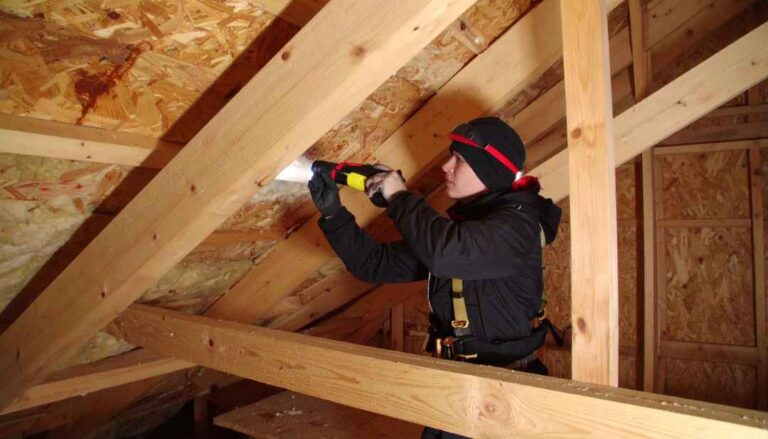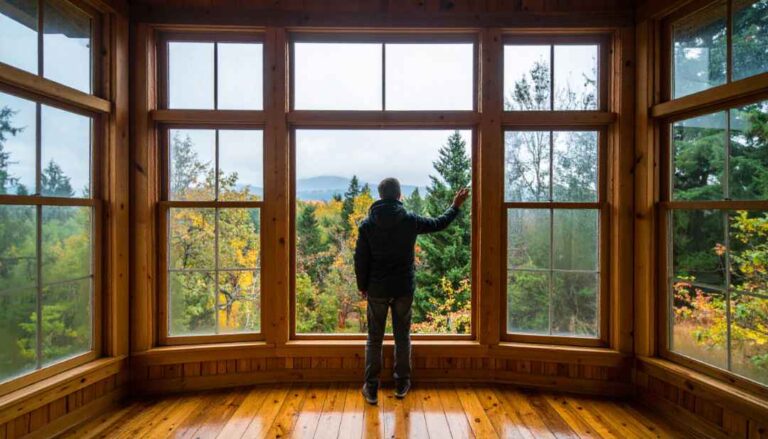Shingle Granules in your Gutter
You’re cleaning out your gutters, a familiar autumn chore for any Chicago homeowner. Amidst the soggy leaves and twigs, you notice something else: a significant amount of small, gritty, sand-like particles. They’re the same color as your roof, and they seem to be everywhere. Your stomach drops. You’ve found shingle granules in your gutter, and your immediate question is: What does this mean for my roof’s health?
This isn’t just common debris; those granules are the protective armor of your asphalt shingles. Their presence in your gutters is a subtle but potent warning sign that your roof is undergoing a critical change. For homeowners across Illinois, especially in a climate prone to harsh weather like ours, understanding this indicator is crucial for proactive roof maintenance and preventing costly future damage.
At Seidel Exterior Group, we’ve been diagnosing and restoring Chicagoland roofs since 1970. We understand that granule loss is one of the most common, yet often misunderstood, signs of roof distress. This article will explain exactly what those granules are, why they’re ending up in your gutters, what it means for your roof’s health, and why contacting a professional for a timely inspection is your essential next step.
Understanding Roof Shingle Granules: Your Roof’s First Line of Defense
Before we delve into what their loss signifies, let’s understand the vital role these tiny particles play on your asphalt shingle roof:
- UV Protection: This is their primary job. Made from crushed stone, ceramic, or other durable minerals, granules are embedded into the asphalt layer of your shingles during manufacturing. They act as a sacrificial layer, absorbing and deflecting the sun’s powerful ultraviolet (UV) rays. Without this protection, the asphalt layer would quickly dry out, become brittle, crack, and degrade.
- Weather Resistance: Granules add a crucial layer of durability, enhancing your shingles’ resistance to the erosive effects of rain, wind, and even minor hail impacts. They provide a physical barrier.
- Fire Resistance: The mineral composition of granules contributes to the fire-resistant properties of asphalt shingles, helping to slow the spread of flames in the event of a fire.
- Aesthetic Appeal: Granules come in various colors and blends, giving your roof its distinctive color and texture, enhancing your home’s curb appeal.
- Algae & Moss Inhibition: Some modern granules are infused with copper or zinc, which helps inhibit the growth of unsightly black streaks (algae) or moss, particularly in humid environments.
In essence, shingles are designed to slowly shed granules over their lifespan. A small amount is normal, but a noticeable accumulation in your gutters or at the base of your downspouts is a red flag.
Why Are Granules Ending Up in Your Gutters? The Top Causes
When you find a significant amount of shingle granules in your gutters, it generally points to one of two primary issues, or a combination of both:
1. Normal Aging and Wear
Just like any building material, asphalt shingles have a finite lifespan. In Chicagoland, the average lifespan of asphalt shingles can range from 15 to 30 years, depending on the type (3-tab, architectural, premium) and, crucially, the severity of local weather. As shingles age, they naturally begin to lose granules.
- UV Degradation: Years of relentless exposure to the sun’s UV radiation causes the asphalt binder to dry out and break down, loosening the granules. This is a slow, gradual process.
- Thermal Expansion and Contraction: Chicagoland’s extreme temperature swings, from scorching summers to freezing winters, cause shingles to constantly expand and contract. This puts stress on the shingle material, leading to wear and tear and granule detachment over time.
- Rain and Wind Erosion: Persistent rain washes away loosened granules, and everyday winds can slowly erode them from the shingle surface.
- Foot Traffic: While minimal, any foot traffic on the roof (e.g., for cleaning, minor repairs) can dislodge granules, especially on older, more brittle shingles.
What it means for your roof’s health (Aging): If granule loss is widespread and accompanied by other signs of aging (curling, cracking, brittle shingles, bald spots), it’s a strong indicator that your roof is nearing the end of its useful life and likely needs replacement. The more granules lost, the less UV protection remains, accelerating the roof’s demise.
2. Storm Damage (Especially Hail)
This is often the most concerning cause of sudden or accelerated granule loss, particularly in Illinois where hailstorms are common.
- Hail Impact: Hailstones, even small ones, are essentially ice projectiles. When they strike an asphalt shingle, they can forcibly dislodge or embed granules. The impact can also “bruise” the shingle, creating soft spots or micro-fractures in the asphalt mat, which then causes granules to shed more rapidly.
- Wind Damage: While wind primarily causes shingles to lift or blow off, sustained high winds can also cause abrasive wear, leading to granule loss, especially if shingles are already weakened by age or prior hail.
- Impact Force: The size and density of the hail, coupled with wind speed, determine the severity of the impact. Even if you didn’t see large hail, smaller, harder impacts can cause significant granule loss that only becomes apparent days or weeks later.
What it means for your roof’s health (Storm Damage): If granule loss is concentrated in certain areas, accompanied by dents on gutters/vents, or if it occurred after a recent storm, it’s a strong indicator of hail damage. This type of damage significantly compromises the shingle’s protective qualities and often warrants an insurance claim. The hidden micro-fractures and mat damage are particularly problematic, as they can lead to leaks much sooner than age-related loss.
The Dangers of Ignoring Granule Loss
Regardless of the cause, ignoring significant granule loss can lead to a host of expensive and inconvenient problems for your Chicagoland home:
- Increased UV Exposure: Without granules, the asphalt layer is directly exposed to the sun’s UV rays, causing it to rapidly dry out, become brittle, and crack. This accelerates the aging process by years.
- Reduced Water Resistance: A compromised surface means water sheds less effectively. It can pool in damaged areas or seep through micro-fractures, leading to leaks in your attic, ceilings, and walls.
- Compromised Structural Integrity: Persistent leaks can lead to rot in the roof decking, rafters, and even wall studs, weakening your home’s structure and creating costly, complex repairs.
- Mold and Mildew Growth: Moisture trapped in the attic or within wall cavities due to leaks creates a perfect breeding ground for mold and mildew, posing health risks and requiring extensive remediation.
- Higher Energy Bills: A damaged roof, even subtly so, loses its insulating properties, leading to warm air escaping in winter and cool air escaping in summer, driving up your utility costs.
- Voided Warranties: Many manufacturers’ warranties require that damage be addressed in a timely manner. Ignoring granule loss could jeopardize future warranty claims.
- Decline in Home Value: A roof with extensive granule loss is visually unappealing and signals to potential buyers that the roof is at or near the end of its life, negatively impacting your home’s resale value.
Your Next Step: Call a Professional (The Seidel Exterior Group Difference)
Finding shingle granules in your gutter is not something to ignore. While a small amount might be normal aging, a significant accumulation, especially after a storm, warrants immediate professional attention.
Why DIY Inspection Isn’t Enough:
- Safety: Climbing on a roof is inherently dangerous, especially if it’s damaged or wet.
- Hidden Damage: You won’t be able to see the subtle bruising, micro-fractures, or mat damage that only a trained eye with hands-on inspection can detect.
- Distinguishing Cause: An untrained eye might struggle to differentiate between age-related granule loss and damage caused by a recent hailstorm, which is critical for insurance purposes.
Why Choose Seidel Exterior Group for Your Inspection:
At Seidel Exterior Group, we specialize in accurate roof diagnostics and repairs for Chicagoland homeowners. Our professional inspection includes:
- Thorough Roof Traverse: Our certified inspectors will safely get on your roof and conduct a meticulous, section-by-section examination, looking for all forms of granule loss, bruising, cracking, and underlying mat damage.
- Comprehensive Exterior Check: We’ll also inspect your gutters (for more than just granules!), downspouts, siding, windows, and any metal components on your roof (vents, flashing) for collateral hail or wind damage, helping to build a complete picture of your home’s exterior health.
- Detailed Documentation: We provide you with clear, high-resolution photos and a comprehensive report of our findings, explaining exactly what the granule loss means for your specific roof.
- Expert Diagnosis: We’ll determine whether the granule loss is primarily due to normal aging, storm damage (hail or wind), or a combination of factors. This is crucial for guiding your next steps.
- Insurance Claim Guidance: If we determine that the damage is likely storm-related and warrants an insurance claim, we will guide you through the entire process. We can even meet with your insurance adjuster to ensure all damage is properly identified and accounted for, maximizing your claim for full restoration.
- Transparent Recommendations: We’ll provide honest, expert recommendations for repair or replacement, outlining your options clearly and transparently. Whether it’s a minor repair, a section replacement, or a full roof replacement, you’ll have all the information to make an informed decision.
Act Now to Protect Your Investment
Those seemingly innocent shingle granules in your gutter are sending a clear message about your roof’s health. Ignoring them is akin to ignoring a flickering engine light in your car – it might not stop immediately, but it signals a problem that will only get worse and more expensive over time.
For Chicagoland homeowners, given our climate and the prevalence of storms, proactive roof inspections are a smart investment. Don’t wait for a leak to discover the true extent of granule loss.
If you’ve found shingle granules in your gutter, don’t delay. Contact Seidel Exterior Group today for a free, no-obligation roof inspection. Our expert team is ready to diagnose the issue, explain your options, and help you ensure your roof continues to protect your Chicagoland home for years to come.



